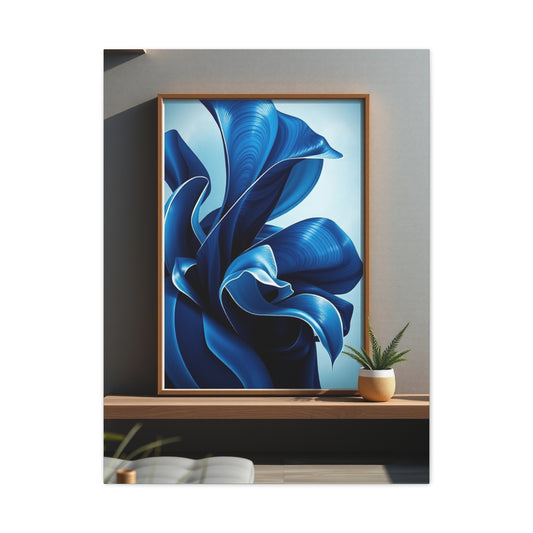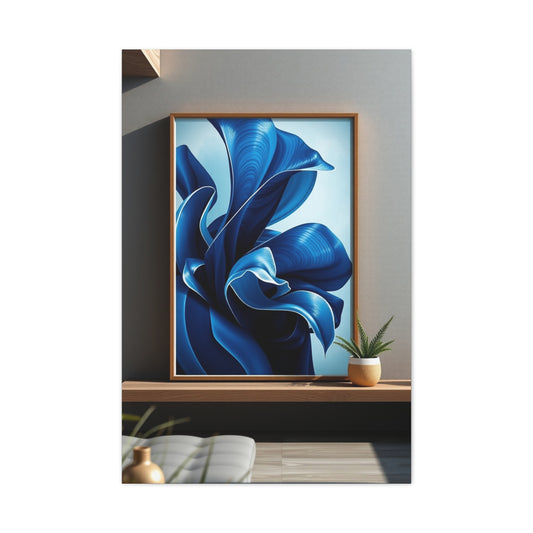Layering in bedroom design is an art that brings depth, texture, and personality into your personal space. It is not just about adding more items, but about carefully selecting pieces that interact with one another to create a cohesive, comfortable, and visually appealing environment. Layering can be applied in multiple aspects of a bedroom, from furniture arrangement and textiles to wall treatments and decorative accessories. The goal is to achieve a sense of richness and warmth that invites you into a serene and personalized retreat.
One of the first steps in layering is choosing the base elements that form the foundation of the bedroom. These include the bed, rugs, flooring, and larger furniture pieces such as wardrobes and seating. For instance, selecting a neutral or muted bed frame and floor covering allows for flexibility in adding colors, textures, and patterns in subsequent layers. A wooden floor, a natural fiber rug, or a simple upholstered bed can act as the canvas on which other design elements are added. The layering process begins with these foundational pieces and builds outward, creating visual interest and harmony in the space.
Textiles play a crucial role in layering, as they offer endless opportunities to combine colors, patterns, and textures. Bedding, throw blankets, cushions, and curtains can all contribute to the layered look. For example, a soft linen bedspread in a muted tone can be paired with a chunky knit throw and patterned cushions, resulting in a bedroom that feels inviting and thoughtfully curated. Mixing textures is especially important. Combining smooth silks with rougher linens, soft velvets with coarse wools, or lightweight cottons with dense knits creates tactile contrast that engages the senses and elevates the overall design. Patterns can also be layered, but the key is to maintain balance. Pairing a large-scale floral print with subtle geometric designs or smaller-scale motifs ensures that the bedroom remains visually appealing without becoming overwhelming.
Furniture layering is another technique that enhances the depth of a bedroom. Incorporating pieces of varying heights, shapes, and materials adds dimension and keeps the room dynamic. A low-profile bed paired with tall nightstands, a mid-height dresser, and a floor-length mirror can create a sense of rhythm and proportion. Adding a bench at the foot of the bed, an accent chair in a corner, or a small side table beside a window seat introduces additional layers that are both functional and decorative. When arranging furniture, it is essential to consider sightlines and circulation, ensuring that layered pieces complement rather than clutter the space. Thoughtful placement of each item ensures that layering enhances comfort and usability while maintaining an aesthetically pleasing composition.
Wall treatments provide another opportunity to layer visually. Designers often recommend using wallpapers, textured paints, or paneling to create a backdrop that adds character and depth. Floral, geometric, or abstract patterns can serve as accent walls, drawing attention to specific areas such as the headboard or seating nook. Textured finishes such as cork, fabric panels, or wood slats add warmth and sophistication, providing a tactile quality that complements layered textiles and furniture. Layering on the walls should always be balanced with the rest of the room. For instance, if a wall features a bold floral print, keeping bedding and rugs in more muted tones allows the wall to stand out without overwhelming the senses. Artwork, mirrors, and shelves can also be used to enhance wall layering, introducing additional textures, reflections, and points of visual interest.
Lighting is a vital component of layering that is often underestimated. Proper lighting can highlight textures, create depth, and establish the mood of a bedroom. Designers advocate for a combination of ambient, task, and accent lighting to achieve a well-rounded and layered effect. Overhead chandeliers or pendant lights provide general illumination, while bedside lamps, wall sconces, and floor lamps offer functional task lighting. Accent lighting, such as LED strips behind headboards, under furniture, or around mirrors, can create subtle highlights that bring out textures and add dimension. Layering light sources ensures that the room feels cozy and dynamic, allowing different areas of the bedroom to serve multiple purposes while maintaining a sense of unity and harmony.
Accessories are the finishing touches that bring the layering concept to life. These include decorative objects, books, vases, sculptures, and indoor plants. Accessories can be used to reinforce color schemes, introduce complementary textures, or create focal points within the bedroom. For example, stacking a few decorative books beside a lamp, placing a small plant on a dresser, or arranging a cluster of candles on a tray adds personality and warmth to the space. In addition, accessories can reflect personal tastes and memories, making the bedroom not only a place of rest but also a space that tells a story. Layering accessories requires restraint; it is important to avoid overcrowding while ensuring each piece contributes meaningfully to the overall design.
Layering also extends to functional elements that enhance the comfort and usability of a bedroom. Storage solutions, such as open shelving, baskets, and under-bed drawers, can be integrated seamlessly into the design while contributing to the layered aesthetic. Using baskets of different sizes and materials, stacking trays, or incorporating decorative boxes allows for organization without sacrificing style. Layering in storage encourages a balance between form and function, ensuring that bedrooms remain practical while visually appealing. Designers emphasize that thoughtful layering of storage items can turn everyday necessities into design features, reinforcing the room’s overall cohesiveness and style.
Color layering is a nuanced approach that adds depth and mood to a bedroom. While neutral palettes form a calm foundation, adding layers of accent colors can enhance visual interest. For instance, a sage green wall may be paired with muted beige or ivory bedding, while cushions and throws in soft pastels or jewel tones provide additional dimension. Color layering can also follow tonal variations, where different shades of the same color are combined to create harmony, or contrasting accents, where complementary hues introduce vibrancy. The strategic layering of color ensures that the bedroom feels dynamic yet serene, reflecting personal taste and creating a space that is both inviting and visually engaging.
Incorporating patterns into layered designs requires careful consideration to maintain balance. Mixing patterns can be exciting, but they should follow certain principles to avoid visual chaos. Designers suggest combining large-scale patterns with smaller motifs or pairing geometric designs with organic forms. The colors within the patterns should also complement one another to create unity. For example, a floral cushion in muted green and cream can be paired with striped or polka-dotted textiles in similar shades, ensuring coherence. Pattern layering can also extend to curtains, rugs, and even furniture upholstery, creating a rhythm that draws the eye through the room while maintaining a sense of order.
Layering extends beyond visual elements to include the tactile and sensory experience of a bedroom. Fabrics with different feels, surfaces with varied textures, and objects with distinct materials contribute to an immersive experience. Imagine walking into a bedroom where the softness of a velvet cushion contrasts with the roughness of a jute rug, the smoothness of wooden flooring meets the delicate texture of embroidered curtains, and the natural grain of rattan furniture complements polished metal accents. Each layer stimulates the senses, creating a bedroom environment that is rich, inviting, and multi-dimensional.
In addition to aesthetic appeal, layering encourages adaptability in bedroom design. By incorporating interchangeable elements such as removable cushions, reversible throws, or modular furniture, a bedroom can be easily updated to reflect changing tastes or seasonal moods. Layering allows homeowners to experiment with styles without committing to permanent changes, offering a flexible and dynamic approach to interior design. This adaptability is particularly important in contemporary homes where personal expression, comfort, and practicality are all equally valued.
The concept of layering ultimately reflects a philosophy of balance, creativity, and individuality in bedroom design. It is not merely about accumulating items but thoughtfully combining elements that enhance one another. From textiles and furniture to lighting, color, and accessories, layering creates a bedroom that is harmonious, engaging, and uniquely personal. A well-layered bedroom invites relaxation, inspires creativity, and offers a space that feels curated and complete. Whether it is the subtle combination of muted tones, the contrast of textures, or the interplay of patterns, layering elevates the bedroom into a sophisticated retreat that accommodates both comfort and style.
Trending Bedroom Colors: Creating Calm and Character
Color plays a vital role in setting the mood and personality of a bedroom. The choice of colors affects how a room feels, influencing emotions, relaxation, and the overall ambience. Current bedroom trends emphasize soothing palettes that combine serenity with modern sophistication. Muted earthy tones, soft pastels, and nature-inspired hues create a sense of calm while allowing other design elements to stand out. Bedrooms designed with carefully selected colors feel both comfortable and stylish, inviting occupants to unwind and rejuvenate in a space that resonates with their personal aesthetic.
Sage green has emerged as a popular choice in bedroom interiors, reflecting a balance between tranquility and subtle vibrancy. This muted green works well as a wall color, a furniture accent, or in textiles such as cushions and throws. Its natural undertone evokes freshness and harmony, making the room feel closer to nature. Pairing sage green with neutral colors such as beige, cream, or soft grey enhances its calming effect while adding visual depth. Designers often use sage green on one wall as a focal point or incorporate it in patterns, such as floral or geometric wallpapers, to create interest and texture. The color’s versatility allows it to be combined with both contemporary and traditional furniture, making it adaptable to different bedroom styles.
Muted pastels are another trend that adds subtle color without overwhelming the space. Soft pinks, gentle blues, lavender, and peach tones introduce warmth and sophistication while maintaining a serene atmosphere. Pastels are particularly effective when layered with natural textures, such as wooden floors, rattan furniture, or linen textiles, creating a soft and inviting bedroom. Combining pastel shades in different elements of the room—such as bedding, curtains, rugs, and cushions—can add harmony and visual cohesion. Designers also recommend pairing pastels with neutral backgrounds to prevent the room from feeling overly sweet or one-dimensional. This approach results in a balanced, soothing environment that enhances relaxation and comfort.
Earthy tones, including muted browns, taupe, terracotta, and ochre, bring warmth and grounding to bedroom interiors. These colors are particularly effective in creating cozy and intimate spaces, as they evoke natural elements and textures. Earthy palettes can be layered with wooden furniture, woven baskets, and natural fiber rugs to enhance the organic feel of the room. Designers often suggest using earthy colors on larger surfaces like walls or floors while complementing them with lighter or pastel shades in furnishings and accessories. This combination creates a well-rounded and layered color story, making the bedroom feel harmonious, welcoming, and stylish.
Accent walls are an effective way to introduce bold or contrasting colors into a bedroom without overwhelming the space. Choosing one wall to feature a strong hue, textured wallpaper, or patterned paint allows the room to have a focal point that draws attention. Floral, geometric, or abstract patterns on an accent wall can add character and personality, making the bedroom feel lively and dynamic. When designing accent walls, it is important to balance them with more neutral or muted surroundings, ensuring the focal point stands out without clashing with other elements in the room. This technique allows for creativity while maintaining a cohesive and elegant design.
Layering colors is an important technique that brings depth and dimension to bedroom design. Instead of using a single flat color throughout the room, layering different shades and tones creates visual interest and sophistication. For example, pairing a soft pastel on the walls with slightly deeper tones in textiles or furniture adds depth without disrupting the calmness of the space. Subtle contrasts between wall colors, bed linens, rugs, and curtains allow each element to stand out while contributing to a unified aesthetic. Color layering also enables homeowners to reflect their personality and style, offering flexibility in updating or modifying the room over time.
Monochromatic color schemes are another popular approach in bedroom design. Using different shades of the same color creates a harmonious and elegant space that feels balanced and cohesive. For instance, a bedroom in varying shades of sage green—from pale green walls to slightly darker bedding and textured throws—can feel sophisticated while maintaining a serene and relaxing atmosphere. Monochromatic schemes also make it easier to layer textures, patterns, and furniture, as the consistent color palette provides a natural backdrop that supports design experimentation.
Complementary colors can be used to add vibrancy and contrast to a bedroom while maintaining balance. Colors opposite each other on the color wheel, such as green and soft pink or blue and warm peach, can be introduced through textiles, cushions, throws, rugs, and decorative accessories. Using complementary colors sparingly ensures that the room remains calming while introducing subtle visual interest. Designers recommend integrating these accents in small doses, such as a cushion set, a patterned rug, or wall decor, so that the room feels curated rather than chaotic. This approach allows for playful experimentation while keeping the overall bedroom environment tranquil and inviting.
Natural inspiration is another source of color trends in bedroom design. Colors inspired by plants, stones, and the earth create a connection to nature that is both calming and visually appealing. Soft greens, muted browns, and sandy beiges can be combined with natural wood tones, rattan furniture, and leafy indoor plants to create a harmonious and refreshing space. Designers often emphasize the use of biophilic design principles, incorporating colors and textures that evoke the outdoors and contribute to a sense of well-being. By drawing on nature-inspired palettes, bedrooms can feel peaceful, balanced, and rejuvenating, offering a retreat from the hustle and bustle of daily life.
Layering patterns in color is a technique that adds depth without overwhelming the senses. Designers suggest combining large-scale prints with smaller motifs or using subtle textures within fabrics to create visual interest. For example, a floral cushion with soft green and cream tones can be paired with a geometric throw in muted colors to add dimension. Layering patterns ensures that the room feels dynamic and personalized, while maintaining harmony within the chosen color palette. Patterned curtains, rugs, and upholstery can all contribute to this layered approach, allowing homeowners to express individuality while keeping the overall environment calming and inviting.
Lighting plays a significant role in enhancing bedroom colors. Natural light highlights the true hues of paints and fabrics, while artificial lighting can alter the perception of color. Designers often recommend using a combination of warm and neutral lighting to enhance color schemes and textures. Bedside lamps, pendant lights, and accent lighting can highlight walls, furniture, and decorative elements, emphasizing the layered colors in the room. Proper lighting ensures that the bedroom feels cozy, welcoming, and visually rich, with colors appearing vibrant yet soothing.
Textiles and furnishings contribute to the perception of color in subtle ways. Bedding, throws, curtains, and rugs introduce shades that complement or contrast with wall colors. For example, layering sage green bedding with off-white throws and pastel cushions creates a sense of depth and visual interest. Upholstered furniture in muted tones or soft patterns can further enhance the layered color palette. Designers highlight the importance of mixing materials, such as combining linen, velvet, and cotton, to reinforce both color and texture, resulting in a cohesive and sophisticated bedroom.
Accessories offer additional opportunities to reinforce the color scheme. Decorative items such as lampshades, picture frames, vases, and indoor plants can complement or contrast with the dominant palette, contributing to a layered and complete look. Designers suggest being intentional with these finishing touches, ensuring that each item enhances the room’s color story while reflecting personal style. Layered colors, combined with thoughtful textures, furniture, and lighting, create bedrooms that feel harmonious, relaxing, and uniquely expressive.
Trending Bedroom Furniture: Comfort, Functionality, and Style
Furniture is the backbone of bedroom design, providing both function and aesthetic appeal. The current trends in bedroom furniture focus on a combination of comfort, versatility, and style, allowing homeowners to create spaces that are both practical and visually pleasing. From dramatic headboards to cozy window seating, designers are emphasizing pieces that elevate the overall look while offering daily usability. Choosing the right furniture, arranging it thoughtfully, and selecting materials that complement the room’s color and texture can transform a bedroom into a serene and stylish retreat.
Headboards have become a central element in bedroom design, moving beyond simple functional pieces to bold statements that define the room’s character. Dramatic headboards are larger, curvier, and more intricately designed than in the past. They can feature tufted upholstery, carved wood, rattan detailing, or layered patterns that add dimension and sophistication. These headboards are not only visually striking but also provide comfort when sitting up in bed for reading, watching television, or enjoying a morning coffee. Designers suggest selecting headboards that harmonize with the room’s color palette and furniture while creating a focal point that draws attention without overpowering the space.
Furniture layering is also key to modern bedroom design. Combining pieces of varying heights, shapes, and textures enhances visual interest and ensures that the room feels dynamic rather than flat. For instance, pairing a low-profile bed with tall nightstands, a mid-height dresser, and a floor-length mirror creates a sense of rhythm and proportion. Adding benches, ottomans, or accent chairs introduces additional layers that are both functional and decorative. Designers emphasize the importance of maintaining circulation and sightlines, ensuring that each piece contributes to comfort and usability while enhancing the room’s aesthetic.
Window seating has emerged as a popular trend, combining functionality with cozy charm. Reintroducing window seats allows homeowners to transform unused corners into inviting nooks perfect for reading, relaxation, or work-from-home setups. Window seating often features built-in storage beneath the bench, making it a practical addition for bedrooms of all sizes. Layered cushions, soft throws, and small side tables can enhance comfort while complementing the room’s overall design. Designers recommend placing the seating near natural light sources to maximize the calming effect and create a connection with the outdoors. This approach transforms corners into intimate, multi-functional spaces that elevate the bedroom experience.
Wardrobes and storage solutions are evolving to meet the demands of contemporary lifestyles. Multifunctional wardrobes with sliding doors, mirrored panels, or modular interiors provide both practicality and style. Designers suggest incorporating materials such as wood, rattan, or metal for a natural yet sophisticated look. Rattan, in particular, has seen a resurgence due to its organic appeal and versatility. It is being used in wardrobe shutters, nightstands, and dressers to create a warm, earthy atmosphere. Combining rattan with muted color palettes, wooden flooring, and layered textiles enhances the natural and cozy feel of the bedroom while offering sustainable and aesthetically pleasing storage solutions.
Bedside tables play an important role in balancing functionality and design. Modern trends emphasize varied shapes, sizes, and materials to complement the bed and headboard. Designers suggest using tables that offer storage or display options, such as drawers, shelves, or open compartments. Mixing materials like wood, metal, and glass adds texture and dimension to the bedroom. Additionally, positioning bedside tables symmetrically or asymmetrically, depending on the room layout, can create either a formal or relaxed aesthetic. Accessories like lamps, books, or decorative items further enhance the layered design, integrating style with practicality.
Benches and ottomans at the foot of the bed are increasingly popular for adding comfort and style. These pieces provide seating for dressing, storage for blankets or cushions, or a simple surface for decor. Upholstered benches in soft fabrics like velvet, linen, or leather add texture and elegance, while wooden or rattan options reinforce a natural and earthy aesthetic. Designers recommend selecting sizes that fit proportionally with the bed and room layout to maintain balance and avoid overcrowding. Layering cushions or throws on these pieces further enhances comfort and visual interest, contributing to the room’s overall depth and personality.
Chairs and accent seating are essential for creating functional zones within the bedroom. A reading corner, small workspace, or meditation nook benefits from a well-chosen chair that combines comfort and style. Designers suggest opting for pieces with unique textures, shapes, or upholstery that complement the existing color palette and furniture. Placing a chair near a window, alongside a floor lamp, or next to a small table creates intimate zones that enhance usability while maintaining a cohesive design. Layering cushions or adding a throw can make the seating more inviting and visually integrated with the room.
Mirrors are functional furniture pieces that also serve as decorative elements. Full-length mirrors, wall-mounted mirrors, or mirrored furniture can enhance the sense of space, reflect light, and add sophistication. Designers recommend positioning mirrors strategically to maximize natural light and create the illusion of a larger room. Mirrored furniture, such as dressers or cabinets, not only adds style but also serves a practical purpose. Pairing mirrors with textured walls, layered textiles, and complementary furniture contributes to a harmonious and visually engaging bedroom environment.
Storage benches, cabinets, and chests are valuable additions for keeping the bedroom organized while maintaining a layered aesthetic. Designers emphasize multifunctional furniture that combines practicality with design appeal. For example, a storage chest at the foot of the bed can double as seating or display space, while modular cabinets with open and closed compartments accommodate personal items and decorative accents. Layering different furniture types and materials creates a bedroom that is both functional and visually rich, reflecting personal style and attention to detail.
Lighting integrated into furniture adds another layer of sophistication. Beds with built-in LED lighting, nightstands with ambient illumination, or wardrobes with internal lights contribute to the bedroom’s functionality while highlighting design elements. Lighting helps accentuate textures, colors, and patterns, reinforcing the layered approach to bedroom design. Designers recommend combining natural light with layered artificial lighting to create a balanced, versatile environment that is suitable for relaxation, work, or entertainment.
Furniture arrangement plays a crucial role in layering and functionality. Designers suggest grouping furniture to create zones, such as a sleeping area, seating nook, or dressing corner, while maintaining an open and breathable layout. Layering furniture of different heights and scales ensures visual balance and flow. For instance, positioning a tall wardrobe beside a low bed, a mid-height dresser across the room, and a small accent chair in a corner creates rhythm and proportion. This thoughtful arrangement allows each piece to contribute to comfort, usability, and aesthetics without cluttering the space.
Accessories integrated with furniture further enhance layered bedroom designs. Decorative trays on nightstands, cushions on benches, throws on chairs, and vases or plants on dressers enrich the overall texture and depth. Designers recommend selecting accessories that complement the furniture’s material, color, and style, creating a cohesive and harmonious environment. Layering functional and decorative items together ensures that the bedroom feels curated and thoughtfully designed, with each element contributing to the room’s character and charm.
Overall, modern bedroom furniture emphasizes a balance between comfort, aesthetics, and functionality. Dramatic headboards, layered textiles, window seating, versatile storage, and thoughtfully arranged accessories create bedrooms that are both practical and visually engaging. By selecting pieces that complement the room’s color palette, texture, and lighting, homeowners can craft spaces that feel personalized, inviting, and sophisticated. Layering furniture and accessories allows the bedroom to evolve with changing needs and tastes, providing flexibility while maintaining style and elegance.
Ruffles and Nostalgic Decor: Adding Charm and Personality
Ruffles have made a remarkable comeback in bedroom design, introducing a sense of nostalgia, softness, and delicate charm. Once considered a quaint or vintage detail, ruffles are now being embraced in modern interiors as a way to soften lines, add texture, and bring playful elegance into personal spaces. They are no longer limited to bedding but are being incorporated into curtains, cushions, throws, and even decorative elements on furniture. Ruffles offer a subtle way to express femininity and romanticism while maintaining a contemporary look when paired with modern textures, colors, and furniture.
Bedding is one of the most common areas where ruffles are making an impact. Bedsheets, pillowcases, and duvet covers with ruffled edges create layers that feel inviting and tactile. Designers suggest combining ruffled bedding with smooth, plain linens to highlight the texture without overwhelming the space. This approach allows the ruffles to stand out as an accent rather than dominate the entire room. Colors for ruffled bedding often follow muted tones, pastels, or earthy shades, which enhance the serene and sophisticated atmosphere of the bedroom while adding a hint of whimsy and charm.
Curtains are another area where ruffles bring personality and softness into a bedroom. Ruffled drapes or curtain trims with delicate pleats and folds add volume and a romantic touch to the windows. Designers recommend pairing ruffled curtains with clean-lined furniture and neutral wall colors to create contrast and balance. Curtains with ruffles can also be layered with sheers or blinds to enhance both functionality and aesthetics. This layering of window treatments not only provides privacy and light control but also contributes to the overall visual richness and depth of the room.
Ruffles are also being integrated into cushions and throws, adding texture and dimension to beds, chairs, and seating nooks. Layering cushions of different sizes, patterns, and textures—some with ruffles and some smooth—creates a cozy and visually appealing arrangement. Throws with subtle ruffled edges draped over the bed or accent chairs contribute to a layered look that feels casual, comfortable, and carefully curated. Designers often suggest mixing fabrics such as cotton, linen, and velvet in ruffled accessories to enhance the tactile experience while complementing the room’s color palette.
Decorative elements with ruffles can also appear on furniture, lampshades, and other accent pieces. For example, lampshades with ruffled edges add a soft glow and playful detail, while chairs or benches with ruffled skirts introduce texture without overwhelming the overall design. This integration of ruffles throughout various elements of the bedroom creates a cohesive look that celebrates nostalgia while remaining contemporary and stylish. Layering ruffles with other textures and patterns allows for creativity and personal expression, giving the bedroom a unique personality.
Curtain trims are another trend that elevates bedroom design by adding intricacy and detail. Embroidered trims, pom-poms, lace, and highlighted edges introduce subtle patterns and visual interest to otherwise plain curtains. These details enhance the sophistication and bespoke feel of the space, making windows a focal point without overpowering other design elements. Designers often recommend selecting trims that complement the room’s color palette and texture scheme, ensuring harmony between the curtains, furniture, and bedding. Layering curtains with decorative trims over plain sheers or blinds creates depth and allows the room to feel luxurious and thoughtfully designed.
Combining ruffles and curtain trims with other elements of bedroom design contributes to a layered and textured environment. For instance, a bed with ruffled bedding can be paired with curtains featuring delicate embroidered trims, accent cushions, and a textured rug. This creates a cohesive look where each element enhances the other, resulting in a space that feels intentional, curated, and comfortable. The interplay of textures, folds, and patterns creates a sense of rhythm and visual interest, making the bedroom an inviting retreat.
Ruffles and nostalgic decor also provide an opportunity to experiment with color and pattern. Pastel hues, soft florals, and muted tones work particularly well, creating a romantic and serene atmosphere. Layering patterned ruffles with solid-colored bedding or incorporating floral designs alongside geometric patterns adds dimension and depth to the room. Designers emphasize the importance of balance, ensuring that ruffles and trims enhance rather than clutter the space. Thoughtful combinations of textures, patterns, and colors result in bedrooms that are both whimsical and sophisticated, marrying nostalgia with contemporary design sensibilities.
Accessories are crucial in enhancing the effect of ruffles and trims in a bedroom. Decorative trays, vases, and table lamps with subtle ruffled or embellished details reinforce the theme while complementing larger pieces like bedding and curtains. Layering accessories in small, intentional groupings adds charm and personality without overwhelming the space. For example, placing a small vase with floral motifs on a bedside table alongside a ruffled throw and coordinating cushions creates a visually rich and harmonious composition. Designers recommend using accessories to echo colors and textures found elsewhere in the room, reinforcing cohesion and balance.
Furniture can also incorporate ruffled details or complementary textures to reinforce the nostalgic theme. Chairs or benches with skirts, ottomans with layered edges, or headboards with subtle fabric folds bring depth and tactile interest to the bedroom. Pairing these elements with neutral or muted colors ensures that the nostalgic details feel modern and sophisticated rather than dated. Layering ruffled furniture with other textures such as wood, metal, or natural fibers adds contrast and dimension, creating a visually engaging and inviting space.
Lighting can enhance the effect of ruffles and trims by casting subtle shadows and highlighting folds and textures. Soft, diffused lighting from table lamps, floor lamps, or pendant lights accentuates the layered details in bedding, curtains, and cushions. Designers suggest combining multiple light sources to create a warm, cozy ambiance that highlights textures while maintaining functionality. Layered lighting complements the layered textures and patterns, reinforcing a cohesive, sophisticated, and inviting bedroom environment.
Ruffles and nostalgic decor trends are versatile and can suit a variety of bedroom styles, from romantic and vintage-inspired spaces to contemporary and eclectic interiors. Designers encourage experimenting with scale, color, and placement to achieve a personalized look. Large ruffles can create a dramatic impact, while subtle trims and small details add elegance and refinement. By thoughtfully layering these elements with other design aspects such as furniture, color, and lighting, bedrooms can achieve a harmonious balance between charm, comfort, and modernity.
The combination of ruffles, curtain trims, and layered accessories reflects a broader philosophy in bedroom design that values texture, detail, and individuality. Each element contributes to the overall story of the room, allowing homeowners to express personality while creating a space that feels welcoming and luxurious. By embracing nostalgic elements in a contemporary way, bedrooms can become serene, stylish, and timeless retreats. Layering ruffles with complementary textures, colors, and furnishings creates a dynamic and engaging environment where every detail enhances comfort and visual interest.
Overall, incorporating ruffles and nostalgic decor provides bedrooms with softness, elegance, and personality. From bedding and cushions to curtains, trims, and furniture, these elements add layers of charm that make the space feel curated and inviting. Thoughtful combinations of textures, colors, and patterns allow for playful experimentation while maintaining balance and harmony. By layering these elements with furniture, lighting, and accessories, homeowners can create bedrooms that are both aesthetically rich and comfortable, reflecting personal style and timeless appeal.
Window Seating and Cozy Nooks: Designing Relaxing Spaces
Window seating and cozy nooks have emerged as essential features in modern bedroom design, offering both functionality and comfort. These areas provide a personal retreat within the bedroom, ideal for reading, relaxing, or enjoying a quiet moment of solitude. By incorporating seating near windows or in previously unused corners, designers are maximizing the usability of bedrooms while adding charm, texture, and layered design elements. A well-designed nook combines aesthetics, comfort, and practicality, transforming simple spaces into inviting sanctuaries that enhance the overall bedroom experience.
Window seats are particularly popular because they make use of natural light, creating bright and airy spots that feel connected to the outdoors. A window seat can be built-in or freestanding, often featuring storage beneath the bench for blankets, books, or other essentials. Designers suggest layering the seating with cushions, throws, and pillows to add softness, texture, and visual interest. The use of varying sizes, colors, and textures in these elements contributes to a cozy and inviting feel. Neutral or muted tones paired with subtle pops of color, such as pastels or earth-inspired shades, complement the bedroom’s overall palette while drawing attention to the nook as a focal point.
Cushions and throws play a vital role in creating comfortable and stylish window seating. Designers recommend combining soft fabrics such as velvet, cotton, and linen to add tactile variety. Layering cushions of different shapes, sizes, and textures creates depth and encourages a sense of relaxation. Throws draped over the seat not only provide warmth but also contribute to the visual layering that is a hallmark of contemporary bedroom design. Patterns, such as subtle florals, stripes, or geometric designs, can be mixed with solid colors to enhance the layered effect without overwhelming the space. The careful selection and placement of these textiles ensure that the nook feels both functional and visually appealing.
Beyond aesthetics, window seating provides practical benefits, particularly in smaller bedrooms. By integrating storage beneath the seat or utilizing nearby shelving, the area becomes a multifunctional space. Designers suggest using built-in storage compartments to keep essentials organized while maintaining a clean and clutter-free environment. Books, blankets, and decorative items can be stored neatly, allowing the nook to serve multiple purposes without sacrificing comfort or style. The integration of functional storage enhances the room’s usability while reinforcing the layered and curated look that contemporary design favors.
Cozy nooks extend beyond window seating, including corners or alcoves within the bedroom that can be transformed into intimate spaces. Small chairs, poufs, or benches can create reading areas or meditation spots, while side tables or shelves provide surfaces for personal items or decor. Layering elements such as rugs, cushions, and wall art adds texture and warmth to these areas, making them feel inviting and comfortable. Designers emphasize the importance of proportion and scale, ensuring that furniture fits appropriately within the nook without overcrowding the space. Thoughtful arrangement and layering allow each nook to feel distinct while harmonizing with the overall bedroom design.
Lighting is a critical aspect of window seating and cozy nooks. Natural light should be maximized whenever possible, but layered artificial lighting ensures usability throughout the day and evening. Designers suggest combining overhead lighting with table lamps, wall sconces, or floor lamps to create a balanced and adaptable environment. Soft, warm lighting enhances the sense of comfort and relaxation, while adjustable lighting options allow the space to function for reading, work, or quiet reflection. Layered lighting reinforces the layered textures and textiles within the nook, highlighting design elements and creating a cohesive and inviting atmosphere.
Rugs and flooring contribute significantly to the comfort and style of window seating areas. A soft rug under the seating or layered around the nook adds warmth, texture, and visual grounding. Designers recommend selecting rugs that complement the bedroom’s overall color palette while adding subtle patterns or textures to enhance depth. Layering smaller rugs over larger neutral pieces can also create interest and define the space within the room. The tactile quality of the rug contributes to the cozy and inviting nature of the nook, encouraging use and reinforcing the layered design concept.
Incorporating multifunctional furniture within window seating and cozy nooks enhances usability. For example, a built-in desk or small work table can be integrated into the seating area, allowing the space to serve as a reading, study, or work zone. Designers suggest modular or movable furniture options that can adapt to different needs while maintaining comfort and style. Layering cushions, throws, and decorative items within these multifunctional areas ensures that they remain visually appealing and cohesive with the bedroom’s overall design. This approach reflects the modern emphasis on flexible, functional spaces that cater to various activities without compromising aesthetics.
Window treatments also contribute to the layering and comfort of cozy nooks. Curtains, blinds, or shades can be layered to control natural light, provide privacy, and enhance the room’s textures. Designers often recommend combining sheer curtains with heavier drapes or using subtle trims to add visual interest. This layering allows homeowners to adjust light and mood while maintaining a soft, inviting atmosphere. Window treatments work in harmony with cushions, throws, and furniture, creating a cohesive and well-curated nook that feels both practical and stylish.
Accessories and decorative elements further enhance the appeal of window seating and cozy nooks. Plants, vases, books, and small art pieces can be strategically placed to add character and personality. Designers suggest selecting accessories that complement the room’s color palette and textures while adding layers of interest and depth. The careful placement of these items ensures that the nook feels curated rather than cluttered, reinforcing the idea that every element contributes meaningfully to the overall design. Accessories also provide an opportunity for homeowners to express individuality and creativity, making the space uniquely their own.
Layering in window seating and cozy nooks extends beyond visual appeal to include comfort and usability. Soft cushions, supportive seating, and layered textiles create areas where occupants can relax for extended periods. Designers highlight the importance of ergonomics in these spaces, ensuring that seating is comfortable, functional, and proportionate to the surrounding furniture. Layering textiles, textures, and furniture elements enhances comfort while adding depth and dimension to the space. This combination of aesthetics and functionality reflects contemporary bedroom design principles, emphasizing the creation of spaces that are both beautiful and usable.
Color choices for window seating and cozy nooks are closely tied to the bedroom’s overall palette. Muted tones, earthy shades, and pastels create a calming and harmonious atmosphere, while subtle accent colors can add interest and highlight the nook as a focal point. Designers often layer colors in textiles, furniture, and accessories to create a sense of depth and cohesion. For example, a sage green cushion paired with neutral throws and a patterned rug can define the seating area while maintaining visual harmony with the rest of the bedroom. Thoughtful layering of colors ensures that the nook feels integrated, comfortable, and visually appealing.
Finally, integrating natural elements enhances the sense of calm and relaxation in window seating and cozy nooks. Plants, natural fiber rugs, wooden furniture, and rattan accents bring warmth and organic textures into the space. Designers recommend layering natural materials with soft textiles and subtle color accents to create a balanced and inviting environment. The interplay of textures, materials, and colors reinforces the layered design approach, transforming nooks and seating areas into cozy, personalized retreats that encourage relaxation and well-being.
Overall, window seating and cozy nooks are essential elements in modern bedroom design, combining comfort, style, and functionality. By layering cushions, throws, rugs, furniture, and accessories, these spaces become intimate, inviting, and visually appealing. Thoughtful use of natural light, lighting fixtures, and materials enhances the layered textures, creating areas that are both practical and aesthetically rich. Multifunctional and adaptable, these nooks allow bedrooms to serve multiple purposes while maintaining a serene and curated environment. Layered window seating and cozy nooks exemplify the modern approach to bedroom design, emphasizing comfort, personalization, and timeless appeal.
Rattan Furniture, Curtain Trims, and Finishing Touches: Completing a Layered Bedroom
Rattan furniture has become a defining feature in contemporary bedroom design, combining natural textures with functionality and style. Its warm, organic appeal introduces a sense of earthiness while maintaining a light and airy feel in the space. Rattan can be incorporated into wardrobes, chairs, nightstands, headboards, and even decorative accents. Designers emphasize the versatility of rattan, as it complements both modern and traditional interiors while harmonizing with muted color palettes, natural textures, and layered textiles. The intricate weaving of rattan adds subtle texture and depth, making it ideal for creating visually engaging and comfortable bedrooms.
Wardrobes and storage pieces in rattan provide practical solutions while reinforcing aesthetic appeal. Rattan shutters or panels in sliding wardrobes bring warmth and visual interest, contrasting beautifully with smooth wall finishes or muted painted surfaces. Combining rattan with wood or metal frames enhances durability and adds a layered design element. Designers recommend pairing these storage pieces with layered textiles such as rugs, throws, and cushions, which creates a tactile and inviting bedroom environment. Rattan furniture’s natural texture works well with soft pastels, muted greens, and earthy tones, completing a harmonious and serene space that feels connected to nature.
Rattan headboards and bedside tables are increasingly popular due to their ability to blend comfort, style, and organic charm. A rattan headboard serves as a statement piece, balancing contemporary minimalism with textural warmth. Bedside tables in rattan or wicker designs add lightness to the space while offering practical storage. Layering cushions, throws, and soft bedding with rattan furniture creates contrast and depth, reinforcing the multi-dimensional aesthetic that defines modern bedrooms. Designers often suggest integrating small decorative items or accessories in natural materials, such as wooden trays or ceramic vases, to complement the rattan and enhance the layered design.
Curtain trims are another subtle yet impactful way to complete a layered bedroom. Decorative edges, embroidered patterns, pom-poms, and highlighted hems elevate plain curtains into sophisticated design elements. These trims create visual interest, reinforce textures, and draw attention to windows as focal points without overwhelming the room. Designers recommend coordinating trims with other layered elements, such as bedding, rugs, or cushions, to ensure cohesion. For example, embroidered trims in muted or complementary colors can echo patterns found on pillows or throws, creating a seamless design narrative that connects all aspects of the bedroom.
Layered curtains enhance the overall ambiance and comfort of the bedroom. Combining sheer fabrics with heavier drapes allows for flexibility in light control, privacy, and temperature regulation. Sheers provide softness and diffuse natural light, while layered drapes add texture, insulation, and visual weight. Designers often incorporate subtle trims or ruffles on the layers to harmonize with other decorative elements, such as ruffled bedding or textured cushions. This layered approach transforms windows into dynamic design features, integrating functionality and style while reinforcing the room’s layered aesthetic.
Textiles remain a key component in achieving a layered and cohesive bedroom design. Combining bedding, cushions, throws, rugs, and curtains of varying textures and patterns enhances depth and visual richness. Designers advocate mixing materials, such as linen, cotton, velvet, or wool, to stimulate the senses and create comfort. Layered textiles allow for both contrast and harmony, with patterns balancing solid colors and muted tones, complementing bolder accents. For instance, a sage green bedspread layered with ruffled pillows, a velvet throw, and a patterned rug creates a multidimensional and inviting space. Textiles interact with furniture, colors, and lighting to form a unified, thoughtfully designed bedroom environment.
Lighting is an essential element in completing a layered bedroom. Designers recommend combining ambient, task, and accent lighting to highlight textures, patterns, and furniture details. Overhead fixtures provide general illumination, while bedside lamps, floor lamps, or wall sconces offer functional lighting and create cozy atmospheres. Accent lighting, such as LED strips behind headboards, under furniture, or around mirrors, adds subtle highlights that emphasize layers and textures. Layering light sources ensures that the room is versatile, comfortable, and visually dynamic, reinforcing the multi-dimensional approach to bedroom design.
Accessories and decorative elements are critical finishing touches in layered bedroom design. Vases, artwork, books, candles, and plants can introduce complementary colors, textures, and patterns while enhancing personality and warmth. Designers suggest careful curation to avoid clutter while ensuring that each item contributes meaningfully to the room’s overall aesthetic. Layered arrangements of accessories on nightstands, dressers, or window sills create depth and visual interest, allowing the bedroom to feel curated, personalized, and inviting. Accessories also serve as opportunities to experiment with style, color, and texture, completing the layered design story.
Rugs and flooring play a significant role in the final look of a layered bedroom. Designers often recommend using rugs to anchor furniture, define zones, and introduce additional texture or color. Layering rugs of different sizes, patterns, or materials enhances visual interest and creates a dynamic floorscape. For instance, placing a small patterned rug over a neutral larger rug adds depth while reinforcing the color palette and texture scheme of the bedroom. Rugs interact with furniture, textiles, and accessories, contributing to the overall cohesive and layered design that is central to contemporary bedrooms.
Incorporating natural elements throughout the bedroom enhances the layered aesthetic and promotes a sense of calm and connection to the environment. Plants, wooden furniture, rattan accents, woven baskets, and natural fiber rugs introduce warmth, texture, and organic charm. Designers often emphasize the importance of combining these natural materials with textiles, lighting, and color to achieve balance and harmony. Layered natural elements create a bedroom that feels alive, comfortable, and visually engaging, reflecting a contemporary approach that values both style and sustainability.
Color coordination is essential in tying together rattan furniture, curtain trims, and layered accessories. Designers recommend selecting a cohesive palette that complements natural textures while allowing accent colors to stand out. Soft greens, earthy tones, muted pastels, and neutral shades work well with rattan and layered textiles, creating a serene and inviting environment. Layering colors across furniture, bedding, rugs, curtains, and accessories ensures visual depth while maintaining harmony. Complementary or accent shades can be introduced in small doses through cushions, throws, or decorative items, enhancing the richness of the layered bedroom design.
Final touches in a layered bedroom design involve the thoughtful integration of all elements to create a cohesive and inviting environment. Bedding, furniture, rugs, curtains, lighting, accessories, and natural elements must work together to achieve balance, texture, and personality. Designers stress the importance of proportion, scale, and placement, ensuring that every piece contributes to both aesthetics and functionality. Layering allows bedrooms to feel multi-dimensional, dynamic, and personalized, reflecting contemporary design philosophies that prioritize comfort, beauty, and individuality.
The combination of rattan furniture, layered textiles, curtain trims, accessories, and lighting exemplifies the holistic approach to modern bedroom design. Each element interacts with the others, creating depth, visual interest, and a sense of completeness. Rattan introduces organic texture, curtain trims add intricate detail, and layered textiles and accessories provide comfort, style, and personality. Lighting highlights these layers, emphasizing textures and creating ambiance. The overall result is a bedroom that feels luxurious, cozy, and carefully curated, where every detail contributes to a harmonious and visually engaging space.
Finishing touches such as rattan furniture, curtain trims, layered textiles, and thoughtfully chosen accessories are essential in creating a layered and stylish bedroom. These elements provide texture, depth, and functionality while reinforcing the overall design narrative. Layering natural materials, soft fabrics, and intricate details ensures that bedrooms are not only visually appealing but also comfortable and inviting. Designers emphasize the importance of cohesion and balance, demonstrating that a well-layered bedroom reflects both personal style and timeless elegance. Through careful layering of furniture, colors, textiles, lighting, and decorative accents, bedrooms are transformed into serene retreats that embody comfort, beauty, and sophistication.
Conclusion
Trending bedroom designs showcase a beautiful balance of comfort, functionality, and style, allowing personal spaces to become true retreats. Layering has emerged as a central principle, guiding the thoughtful combination of furniture, textiles, colors, lighting, and decorative elements to create depth, texture, and visual interest. From dramatic headboards and cozy window seating to ruffles, curtain trims, and rattan furniture, every element contributes to a harmonious environment that is both inviting and aesthetically pleasing.
Color plays a pivotal role in setting the tone of the bedroom, with muted earthy shades, soft pastels, and nature-inspired hues creating calm, serene atmospheres. These palettes are carefully layered with textiles, furniture, and accessories to achieve a multi-dimensional look that is rich without being overwhelming. Layered patterns and textures, from floral prints and geometric motifs to velvet, linen, and natural fibers, enhance the tactile experience, ensuring that the room is visually engaging and cozy at the same time.
Furniture trends emphasize both style and practicality, with dramatic headboards, multifunctional storage, and flexible seating solutions defining contemporary bedrooms. Window seats and cozy nooks transform previously unused spaces into functional retreats, while rattan furniture adds an organic, timeless appeal. Curtain trims and layered fabrics contribute subtle sophistication, completing the layered aesthetic and reinforcing a sense of personalization.
Lighting, both natural and artificial, enhances all these elements, highlighting textures, colors, and design details while creating the perfect ambiance. Accessories and decorative touches, carefully curated, add individuality and warmth, tying together the layers of the room into a cohesive and inviting whole.
The combination of these trends illustrates a broader philosophy in bedroom design—one that values comfort, creativity, and personal expression. Layering allows homeowners to experiment with colors, textures, patterns, and furniture arrangements, producing bedrooms that are adaptable, functional, and timeless. Each detail, from textiles to furniture to finishing accents, works together to create a space that is not only beautiful but also a sanctuary for rest, relaxation, and inspiration.
Ultimately, modern bedroom design is about crafting spaces that reflect individuality while promoting calm, balance, and aesthetic harmony. By embracing layering, thoughtful color schemes, multifunctional furniture, nostalgic details, and natural textures, homeowners can transform their bedrooms into stylish retreats that are as comfortable as they are visually captivating. The trends highlighted provide endless opportunities to personalize and elevate bedroom interiors, ensuring that every room tells a story while remaining a serene and functional haven.




























